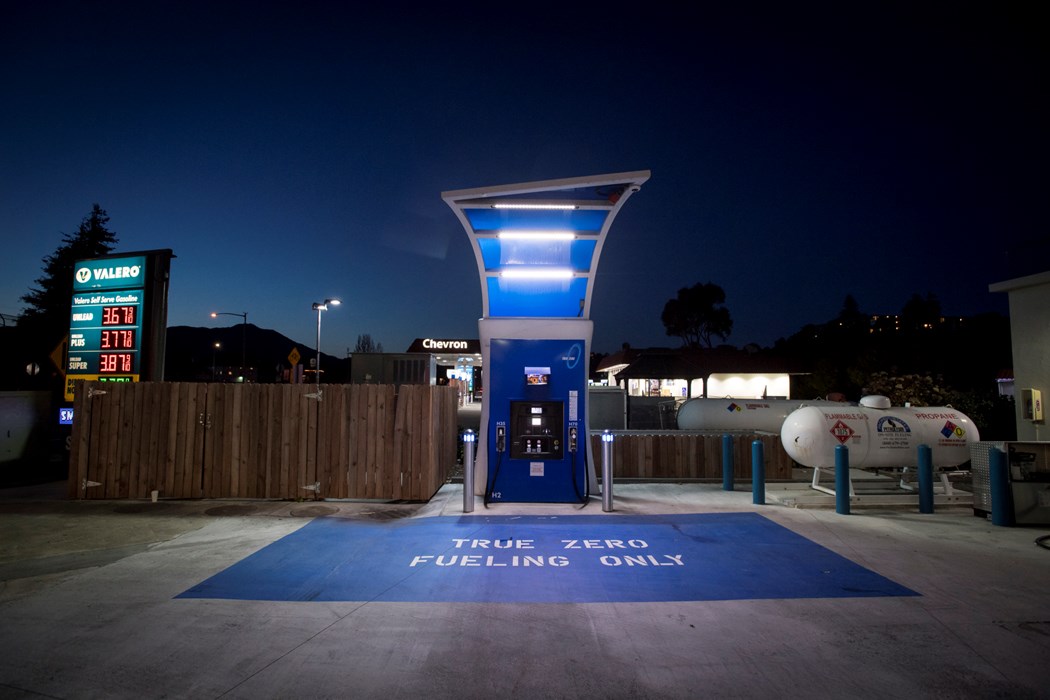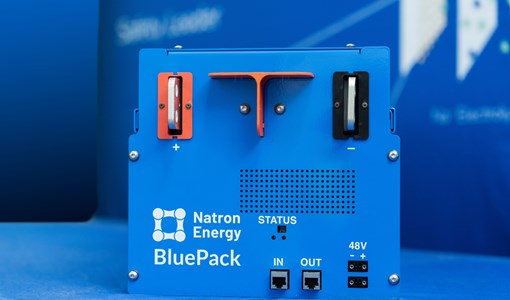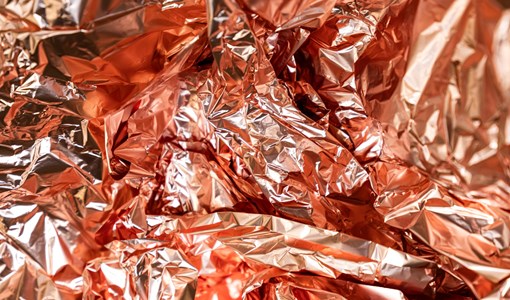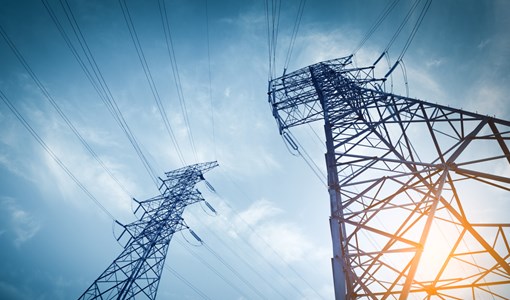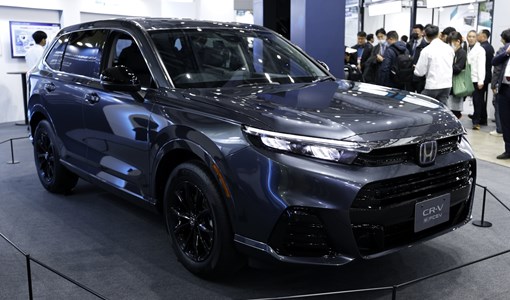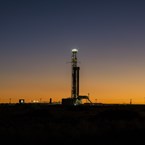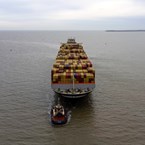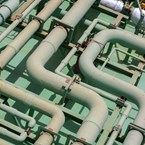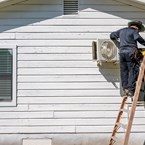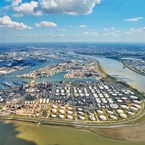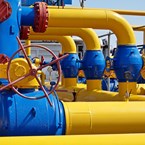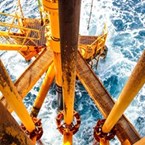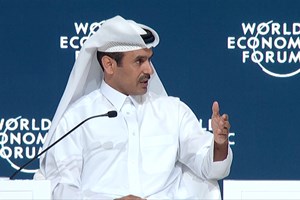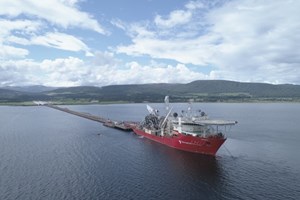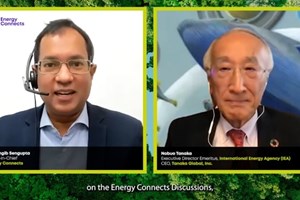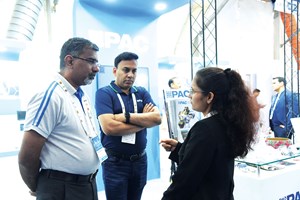Few Stations and $200 to Fill Up: Life on California’s ‘Hydrogen Highway’
(Bloomberg) -- As California’s longtime chief climate regulator, Mary Nichols once championed hydrogen fuel cell cars. Just a few years ago, as the state spent tens of millions of dollars on a planned network of fueling stations dubbed “the hydrogen highway,” Nichols was extolling the 300-mile (480-kilometer) range and quick refueling time of her own hydrogen ride, a futuristic Toyota Mirai.
Today, though, Nichols drives a battery-electric Ford Mustang Mach-E. It too offers 300 miles of range. “I would have no problem driving a hydrogen car again but I don’t know that I would feel like I had to,” says Nichols, who served multiple terms as chair of the California Air Resources Board before stepping down in 2020. “Right now, I don’t think it would be a good bet to assume that there’s going to be a big shift to hydrogen vehicles except for heavy-duty trucks, where being able to move a lot of weight is important.”
Despite billions of dollars of investment, fuel cell cars in the US are disappearing in the rearview mirror, overtaken by battery-electric models and stalled by hydrogen shortages and soaring fuel prices. Last year, drivers bought just 3,143 hydrogen cars in California — the only state that sells them — compared with 380,000 BEVs.
Hydrogen’s proponents aren’t throwing in the towel. Toyota and Hyundai are pushing fuel cell models, albeit at heavy discounts, and Honda just announced a hydrogen hybrid version of its best-selling CR-V. California continues to build new infrastructure. But for drivers and would-be car buyers, the practical experience of going hydrogen-electric is bad and getting worse.
“It’s clear what technology has won in the marketplace,” says David Reichmuth, a senior engineer with the Union of Concerned Scientists’ clean transportation program. “If we want to go as fast as possible to decarbonize, then the plug-in electric vehicle is clearly the technology with the infrastructure available to do that now.”
Fuel cells work by converting compressed hydrogen gas in an onboard tank into electricity that powers the vehicle’s motor. Carmakers started developing them in the 1990s after California passed a zero-emissions vehicle mandate to fight smog. Those efforts accelerated in the wake of the state’s landmark 2006 climate law, which ordered a sharp drop in greenhouse gas emissions.
The first hydrogen car efforts were bespoke — in 2006, I drove a prototype of a hand-built Mercedes fuel cell car that cost $1 million. Then in 2013, California enacted legislation allocating $20 million a year to finance 100 hydrogen stations. Soon Honda, Hyundai and Toyota started selling or leasing hydrogen cars in the only state that offered the ability to fuel them.
In 2018, Governor Jerry Brown set a target of 200 hydrogen stations by 2025, a goal to which the state has committed nearly $257 million. But last year Shell Plc quietly declined a $41 million state grant to build 50 stations, and California scaled back its target to 130 stations by 2027. In February, Shell shuttered six of its seven retail hydrogen stations in the state. A total of 66 stations remain, but 12 have been offline for more than 30 days and others sporadically shut down due to supply shortages or equipment problems.
By contrast, California boasts just over 105,000 charging stations for plug-in vehicles. Battery-electric models accounted for 21% of new car sales in the state last year and Tesla’s Model Y and Model 3 were California’s top two best-selling vehicles.
Even for functional hydrogen fuel stations, downtime is routine. On April 2, for instance, 16 of the state’s 54 stations in operation were closed, according to real-time data from the Hydrogen Fuel Cell Partnership. Southern California, hit particularly hard by the Shell closures, sees about half of its stations go offline on any given day.
In Northern California, drivers in affluent Marin County rely on a single fuel station, which on one afternoon in late March had only enough hydrogen to fill up a few cars. (Three days later, it went offline due to “mechanical issues.”) On the other side of San Francisco Bay, Shell’s exit cost Berkeley, where fuel cell car sightings aren’t uncommon, its sole open station.
Across the state, the closures and downtime are leaving drivers scrambling to find fuel. On Reddit, one Mirai owner posted that their car had been towed twice recently after running out of fuel, as every hydrogen station within 25 miles had gone offline. A Sacramento-area tow truck driver chimed in that they tow several marooned hydrogen cars a month to the only fueling station still open in the state capital region.
Complaints about fuel prices are just as common. Filling up a Mirai, a Hyundai Nexo or a Honda FCX Clarity runs a California driver about $200 — the equivalent of paying $14.60 for a gallon of gas.
“The car is AMAZING but the fueling infrastructure and cost of hydrogen per mile is TERRIBLE,” wrote one Mirai owner on Facebook. On Reddit, a hydrogen fuel cell car owner in Southern California vented that, “The cost is the equivalent of driving a monster truck that gets 9 mpg.”
The sky-high fuel prices are discouraging even hardcore hydrogen enthusiasts like Tina Imahara. A documentary film editor in Southern California, Imahara bought her first fuel cell car, a 2017 Mirai, after working on environment-themed movies. “The car itself is incredible,” she says. “I lived 84 miles from my closest station when I first got my first one, so I really had to plan. There were some close calls when I was running on fumes.”
By the time Imahara upgraded to a 2021 Mirai — which came with a $15,000 fuel card — the number of stations had grown and she now lives close to one. But as hydrogen fuel prices soared last year, she reluctantly traded the Mirai for a battery-electric Toyota bZ4X SUV.
“We went right through our card,” she says. “Hydrogen was double the price of gas and we weren’t going to go back to gas.”

Just a decade ago, hydrogen cars’ future looked brighter. In 2014, I visited Honda’s North America headquarters in the Los Angeles suburb of Torrance to take a spin in the carmaker’s 2013 FCX Clarity. The sedan could travel 240 miles on a tank of H2, an impressive distance for an EV at a time when most battery-electric models had 80 miles of range. I stopped by a Shell hydrogen station near Honda’s corporate campus, where it took only a few minutes to fill the Clarity’s tank. It seemed like a game-changer.
When I returned to Torrance last month, the game had indeed changed: Honda discontinued the Clarity in 2021. I was there for a preview of the 2025 Honda CR-V e:FCEV, a battery-electric hydrogen hybrid version of the company’s CR-V compact SUV. The e:FCEV has a range of 270 miles and can run on battery power for 29 of them, mitigating the volatility of the hydrogen market and the unreliability of fueling stations. Honda’s pitch is essentially: Do most of your daily driving on battery power, charge at home, and save trips to a hydrogen station for longer journeys.
Honda has sold nearly 6 million internal-combustion CR-Vs in the US, and the e:FCEV I drove around LA wouldn’t look out of place in any suburban driveway. The ride is as quiet and smooth as EV drivers have come to expect. But the specs are nothing special: My Uber from the airport, a Tesla Model 3, had more than 300 miles of range. Honda anticipates leasing just 300 hydrogen CR-V’s a year to start, only in California and for a price to be announced later.
Other carmakers are also hedging their bets with hydrogen. Hyundai sells the Nexo SUV, which debuted in the US in late 2018 and now boasts up to 380 miles of range. But the carmaker moved only a few hundred of them in California last year. Hyundai declined to make an executive available to discuss its hydrogen strategy.
Toyota, which has placed a major bet on hybrid cars, also remains committed to hydrogen. Since introducing the Mirai in 2015, the carmaker has sold more than 14,000 of them in California; the most recent models get up to 400 miles per tank.
“We not only see fuel cells as great for the light vehicle, but we also see it as an option for heavy-duty vehicles and we also see it as a great option for electrical generation,” says Tim Bliss, general manager of Toyota vehicle marketing in North America.
Honda, too, says its fuel cell car is about creating demand for hydrogen, as a source of backup power and for difficult-to-electrify transportation such as trains, planes and heavy-duty trucks. “For us it’s a long-term play to not just grow light vehicles, but to grow the overall hydrogen economy, and light vehicles are an essential part of that,” says Jay Joseph, vice president for sustainability and business development at American Honda Motor Co.
But deep discounts on fuel cell cars tell a different demand story. In March, Toyota offered up to $40,000 cash back on a new $49,500 2023 Mirai Limited, a lower-range model, plus 0% financing. (Bliss says this inventory adjustment applied to a small number of cars.) Over at a Hyundai dealership, you could pick up a new $63,585 Nexo for $28,585 and pay no interest. At one San Francisco Toyota dealership, a used 2020 Mirai could be had for about $12,000.
California has no plans to walk away from hydrogen. The state is still spending tens of millions of dollars a year on infrastructure and hydrogen production, which can also be used to electrify heavy-duty trucks. Because a fuel cell powertrain weighs less than a battery, hydrogen-powered trucks can drive longer distances with greater loads. Trucks also disproportionately contribute to the state’s greenhouse gas emissions and adverse health effects, particularly on low-income communities of color.
“A big priority for us right now with regard to hydrogen fuel cell electric vehicles is to improve the reliability and performance of the existing refueling network, so that those who purchased or leased hydrogen vehicles can be confident they will be able to refuel when needed,” says Hannon Rasool, director of the California Energy Commission’s fuels and transportation division.
The state is also trying to green the hydrogen itself. Most of the hydrogen dispensed in California is gray, meaning it’s produced from natural gas, according to a state report released in December. Rasool says California has awarded $22 million for green hydrogen projects, including three plants that will tap renewable electricity to power electrolyzers, which produce hydrogen from water. The Biden administration also awarded the state $1.2 billion to create its own hydrogen hub, which Rasool says will boost supplies of green hydrogen over the next eight years.
Whether that means fuel cell rides can ever catch up with battery-electrics in the race to decarbonize cars remains to be seen. But some superfans are watching closely. If fuel prices do drop, Imahara plans to jump back on the hydrogen highway. She likes that hydrogen is produced in the US and that fuel cell cars don’t rely on metals controlled by other countries. “The future needs to be hydrogen and not completely battery,” she says.
©2024 Bloomberg L.P.
KEEPING THE ENERGY INDUSTRY CONNECTED
Subscribe to our newsletter and get the best of Energy Connects directly to your inbox each week.
By subscribing, you agree to the processing of your personal data by dmg events as described in the Privacy Policy.
More renewables news
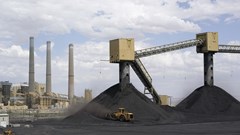
Biden Curbs on Power Plant Pollution Collide With Demand
Apr 25, 2024
South Korea’s Top Steelmaker Rethinks Battery Metal Investments
Apr 25, 2024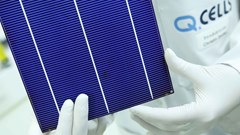
Korea Solar Maker Qcells to Shut Down Production in China
Apr 25, 2024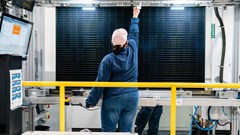
US Solar Makers Seek Additional Tariffs on Panel Imports From Asia
Apr 24, 2024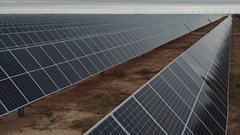
Enel Forced to Raise Coupons on $11 Billion of ESG Bonds
Apr 23, 2024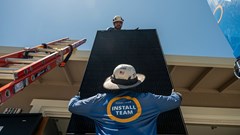
SunPower Slides After Disclosing Plans to Restate Earnings
Apr 23, 2024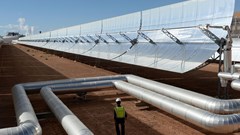
AFC Joins $20 Billion Morocco-to-UK Subsea Power Export Project
Apr 22, 2024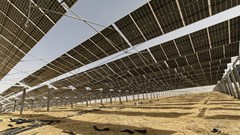
China’s Rapid Solar Growth Slows as Grid Seeks to Keep Pace
Apr 22, 2024
Europe Is Being Scorched and Flooded by Growing Climate Extremes
Apr 22, 2024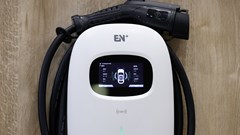
Biden Unveils Winners of $2 Billion in Green Tax Credits
Apr 19, 2024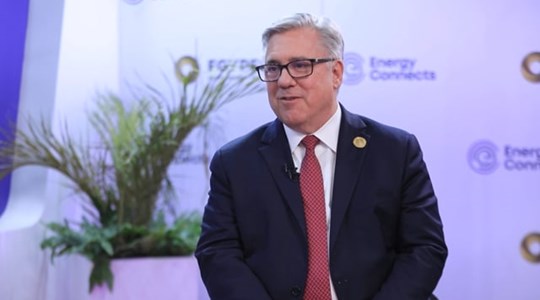
Chevron helping drive Egypt’s journey to become Africa’s energy powerhouse
Mar 11, 2024
Energy Workforce helps bridge the gender gap in the industry
Mar 08, 2024
EGYPES Climatech champion on a mission to combat climate change
Mar 04, 2024
Fertiglobe’s sustainability journey
Feb 29, 2024
P&O Maritime Logistics pushing for greater decarbonisation
Feb 27, 2024
India’s energy sector presents lucrative opportunities for global companies
Jan 31, 2024
Oil India charts the course to ambitious energy growth
Jan 25, 2024
Maritime sector is stepping up to the challenges of decarbonisation
Jan 08, 2024
COP28: turning transition challenges into clean energy opportunities
Dec 08, 2023
Why 2030 is a pivotal year in the race to net zero
Oct 26, 2023Partner content

Ebara Elliott Energy offers a range of products for a sustainable energy economy

Essar outlines how its CBM contribution is bolstering for India’s energy landscape

Positioning petrochemicals market in the emerging circular economy

Navigating markets and creating significant regional opportunities with Spectrum


